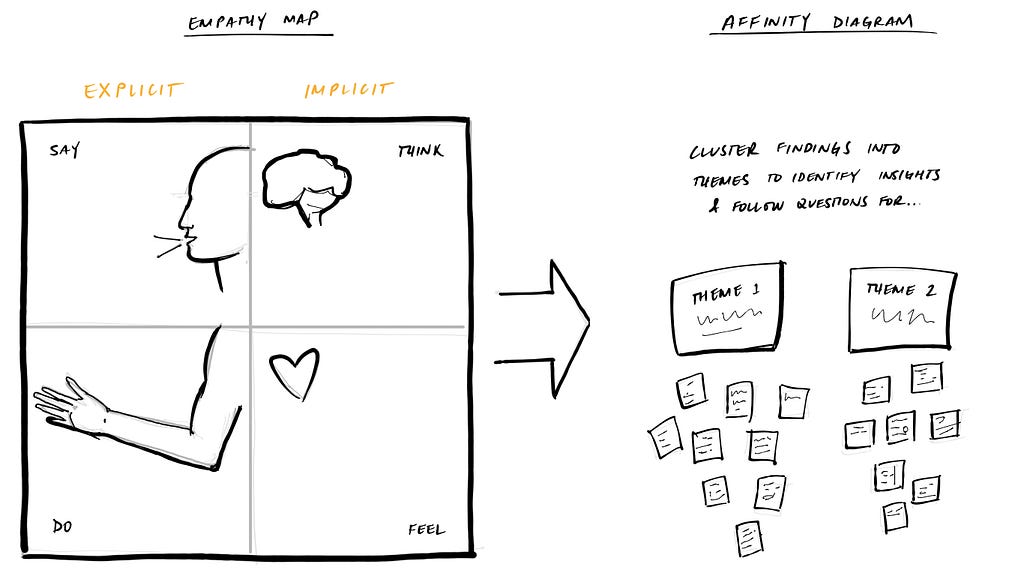Latest news about Bitcoin and all cryptocurrencies. Your daily crypto news habit.
A practical approach to nailing your product manager interview
Successful product leaders are data-driven & customer-backed —they are builders and visionaries. In an interview, you can demonstrate these abilities in a meaningful way (and it will set you apart from other candidates) by talking to customers first.
So here’s the plan that you can “rinse and repeat” for every interview:
If you are seeking a PM role for a consumer app, talk to twenty customers. For small businesses, talk to 10. For enterprise SaaS, talk to 5.
Before I share some of the tactics involved, let’s talk about why this is smart and how it will position you for success.
- Product Knowledge. You’ll understand the product much better than you would by simply downloading and using — or participating in a demo (do this too — but don’t stop there).
- Customer Empathy. You can develop empathy and understand better the customer pain — and how effective or not the product will solve that pain.
- Key Insights. You will see how customers actually use the product — not what people say, what they actually do — i.e. what happens “in the wild.”
By spending time with actual customers, you’ll be able to develop better in-depth questions to ask the interviewer. It will actually feel less like an interview and more of a conversation, or working session, and will be a better experience for everyone.
1. Finding customers
In my experience, with little research and leg-work, customers are relatively easy to find and engage
- Consumers. Ask your friends & family if they use the product or service. Also think about competitive products — or even analogous products/services. You could also post ads on Craigslist to find customers willing to share their experience. Look for opportunities to not only interview, but to observe as well.
- Small/Med business. Similar to consumers, SMBs are all around us. You can look to friends and family, but it’s much more fun to simply go introduce yourself to a small business owner. They may be busy when first introduced, so schedule a time to come back if needed (I’ve rarely been turned down). Small business owners are incredibly passionate about their business and enjoy talking about their venture.
- Enterprise. It’s become quite common for businesses to list their customers on their homepage. It’s done, of course, to build credibility — and help prospects feel more confident about the purchase decision. Take those names and do a LinkedIn search — see if you have anyone in your network from these companies and ask for an introduction.
2. Distilling your observations & findings into insights
This is a key step in turning customer empathy into action. After every customer engagement, I ask myself two questions: What was surprising? What pain did I see?
Customer empathy maps are also extremely helpful when trying to extract helpful insights.
Walk the empathy map (below), posting sticky notes in the appropriate areas, starting with the explicit (say, do) and then to the implicit (feel, think) for each observation. “What did this person...”
… Say? (quotes and keywords)
… Do? (actions and behaviors)
… Feel? (infer emotions using words/facial expressions)
… Think? (infer beliefs, logic – if I do this, then...)
 Empathy map method learned at Intuit’s Innovation Catalyst program
Empathy map method learned at Intuit’s Innovation Catalyst program
- Group related observations and insights into sections that highlight surprises or customer pain
- Identify insights/design challenges for further exploration (this is a great way to generate questions when asked by the interviewer)
3. Final preparation for the interview
Now that you’ve spent time with customers and synthesized your observations and findings into insights & themes, you’re ready for a great interview.
As part of your discovery process, you’ll likely have some interesting ideas about where the team should invest to improve their product. Be ready to confidently share your insights, ideas, and even vision about the product and its direction. Think about what might be the trade-offs or challenges that may occur by investing in some of your ideas. Have questions ready as a way to collect information/improve your idea. Of course, be open to new ideas while defending your own.
Bottom line? Be the product manager before you’re hired by demonstrating your ability (or PM craft) to be customer-backed and data-driven — to be a builder and a visionary. Be the product manager they want to hire.
Before the interview, talk to customers. was originally published in Hacker Noon on Medium, where people are continuing the conversation by highlighting and responding to this story.
Disclaimer
The views and opinions expressed in this article are solely those of the authors and do not reflect the views of Bitcoin Insider. Every investment and trading move involves risk - this is especially true for cryptocurrencies given their volatility. We strongly advise our readers to conduct their own research when making a decision.



